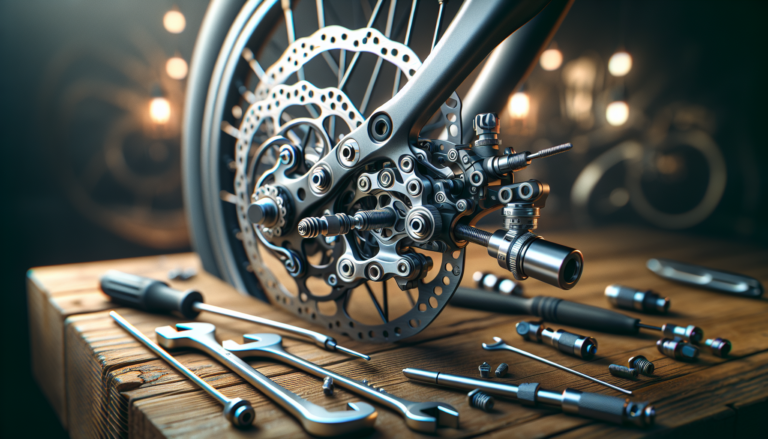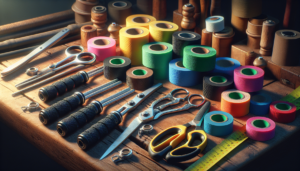Introduction to Adjusting Bike Brakes
Proper brake adjustment is crucial for the safety and performance of your bicycle. Whether you’re a seasoned cyclist or a beginner, knowing how to adjust your bike’s brakes can save you from accidents and ensure a smooth riding experience. In this comprehensive guide, we’ll walk you through the process of adjusting both linear and disc brakes, providing step-by-step instructions and helpful tips along the way.
Why Proper Brake Adjustment is Important
Well-adjusted brakes are essential for several reasons:
- They provide optimal stopping power, allowing you to control your speed and come to a halt quickly when needed.
- Properly aligned brake pads prevent uneven wear and extend their lifespan.
- Adjusted brakes eliminate annoying rubbing noises and reduce friction, making your rides more enjoyable.
By taking the time to adjust your bike’s brakes, you’ll ensure a safer and more efficient cycling experience.
Types of Bike Brakes
Before we dive into the adjustment process, let’s briefly discuss the two main types of bike brakes:
Linear Brakes (V-brakes): These brakes use a cable to pull the brake arms together, causing the brake pads to squeeze the rim. They are commonly found on mountain bikes and hybrid bikes.
Disc Brakes: Disc brakes feature a brake rotor attached to the wheel hub and a caliper that squeezes the rotor to slow down the bike. They offer superior stopping power, especially in wet conditions, and are popular on higher-end mountain bikes and road bikes.
Tools Needed for Adjusting Bike Brakes
To properly adjust your bike’s brakes, you’ll need a few essential tools. Make sure you have these on hand before starting the adjustment process.
Essential Tools
- Allen wrench set (usually 5mm for most brakes)
- Replacement brake pads (if necessary)
Optional Tools
- Needlenose pliers (for adjusting cable tension)
- Cable cutters (if installing new cables)
With these tools ready, you’ll be well-equipped to tackle any brake adjustment tasks.
Step-by-Step Guide to Adjusting Linear Brakes
Follow these steps to adjust your linear brakes for optimal performance:
Checking Brake Pads
- Inspect the brake pads for wear. If they are worn down to less than 1/4 inch, consider replacing them.
- Check that the pads are hitting the rim squarely and not touching the tire. If they are misaligned, loosen the bolt holding the pad and reposition it.
Adjusting Cable Tension
- Squeeze the brake lever to check the cable tension. There should be some slack, but not too much.
- If the cable is too loose, use an Allen wrench to turn the barrel adjuster counterclockwise to tighten it. If it’s too tight, turn the adjuster clockwise.
Aligning Brake Pads
- Spin the wheel and watch how the pads contact the rim. They should hit the rim squarely and evenly on both sides.
- If the pads are not centered, use an Allen wrench to loosen the bolt holding the brake arm. Reposition the arm until the pads are properly aligned, then retighten the bolt.
Testing the Brakes
- Squeeze the brake levers firmly to ensure the pads grip the rim securely and the levers don’t touch the handlebars.
- Take your bike for a test ride in a safe area to verify that the brakes are working effectively.
Step-by-Step Guide to Adjusting Disc Brakes
Disc brakes require a slightly different approach to adjustment. Here’s how to do it:
Checking Brake Pads and Disc
- Inspect the brake pads for wear. If they are less than 1mm thick, replace them with new ones.
- Check the brake disc for any bends or warping. A damaged disc may need to be replaced.
Aligning the Brake Caliper
- Loosen the bolts holding the brake caliper in place, allowing it to move freely.
- Squeeze the brake lever to center the caliper over the disc. While holding the lever, re-tighten the caliper bolts.
Adjusting the Barrel Adjuster
- If the brake feels too soft or too firm, use the barrel adjuster on the brake lever to fine-tune the cable tension.
- Turn the adjuster counterclockwise to tighten the cable and increase brake power, or clockwise to loosen it and reduce power.
Testing the Brakes
- Spin the wheel and check that the disc rotates freely without rubbing on the brake pads.
- Squeeze the brake lever firmly to ensure it engages the pads and stops the wheel effectively.
- Take a test ride in a safe area to verify proper brake function.
Common Issues and Troubleshooting
Even after adjusting your brakes, you may encounter some common issues. Here’s how to troubleshoot them:
Brake Pads Rubbing Against the Disc
Symptom: Brake pads constantly rub against the disc, causing friction and noise.
Solution: Re-align the caliper, ensuring it is centered over the disc. Check that the disc is not bent or warped.
Brake Lever Feels Loose
Symptom: Brake lever pulls too close to the handlebar, reducing braking power.
Solution: Tighten the cable tension using the barrel adjuster or by pulling more cable through the pinch bolt.
Uneven Brake Pad Wear
Symptom: One brake pad wears down faster than the other, causing uneven braking.
Solution: Re-align the brake pads, ensuring they contact the rim or disc squarely. Check for any sticking or binding in the brake arms or caliper.
Maintenance Tips for Bike Brakes
To keep your brakes in top condition, follow these maintenance tips:
Regular Inspection
Inspect your brakes before every ride. Check for any loose bolts, frayed cables, or worn pads. Catching issues early can prevent more serious problems later.
Replacing Worn Brake Pads
Don’t wait until your brake pads are completely worn out to replace them. As a general rule, replace linear brake pads when they reach 1/4 inch in thickness and disc brake pads at 1mm.
Lubricating Brake Cables
Keep your brake cables lubricated to prevent friction and sticking. Use a light lubricant and apply it sparingly to the cable, wiping off any excess.
Conclusion
Adjusting your bike’s brakes may seem daunting at first, but with the right tools and a step-by-step approach, it’s a skill anyone can master.
Summary of Key Points
- Proper brake adjustment is essential for safety and performance.
- Linear brakes and disc brakes require slightly different adjustment techniques.
- Regular inspection and maintenance can prevent serious issues and extend the life of your brakes.
Additional Resources
If you’re a visual learner, plenty of helpful instructional videos are available online. Check out Northrock Bikes’ “Linear Brakes – Basic Adjustment” or Global Mountain Bike Network’s “How to Adjust Disc Brakes”. With practice and patience, you’ll be adjusting your brakes like a pro in no time.






